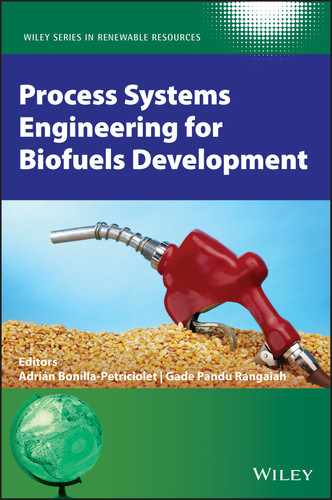A comprehensive overview of current developments and applications in biofuels production Process Systems Engineering for Biofuels Development brings together the latest and most cutting-edge research on the production of biofuels. As the first book specifically devoted to process systems engineering for the production of biofuels, Process Systems Engineering for Biofuels Development covers theoretical, computational and experimental issues in biofuels process engineering. Written for researchers and postgraduate students working on biomass conversion and sustainable process design, as well as industrial practitioners and engineers involved in process design, modeling and optimization, this book is an indispensable guide to the newest developments in areas including: In addition to the comprehensive overview of the subject of biofuels found in the Introduction of the book, the authors of various chapters have provided extensive discussions of the production and separation of biofuels via novel applications and techniques.
Table of Contents
- Cover
- Wiley Series in Renewable Resources
- List of Contributors
- Series Preface
- Preface
- 1 Introduction
- 2 Waste Biomass Suitable as Feedstock for Biofuels Production
- 3 Multiscale Analysis for the Exploitation of Bioresources: From Reactor Design to Supply Chain Analysis
- 4 Challenges in the Modeling of Thermodynamic Properties and Phase Equilibrium Calculations for Biofuels Process Design
- 4.1 Introduction
- 4.2 Thermodynamic Modeling Framework: Elements, Structure, and Organization
- 4.3 Thermodynamics of Biofuel Systems
- 4.4 Sources of Data for Biofuels Process Design
- 4.5 Methods for Predicting Data for Biofuels Process Design
- 4.6 Challenges for the Biofuels Process Design Methods
- 4.7 Influence of Uncertainties in Thermophysical Properties of Pure Compounds on the Phase Behavior of Biofuel Systems
- 4.8 Conclusions
- Acknowledgment
- Exercises
- References
- 5 Up‐grading of Waste Oil: A Key Step in the Future of Biofuel Production
- 6 Production of Biojet Fuel from Waste Raw Materials: A Review
- 7 Computer‐Aided Design for Genetic Modulation to Improve Biofuel Production
- 8 Implementation of Biodiesel Production Process Using Enzyme‐Catalyzed Routes
- 8.1 Introduction
- 8.2 Biodiesel Production Routes: Chemical versus Enzymatic Catalysts
- 8.3 Optimal Reaction Conditions and Kinetic Modeling
- 8.4 Process Simulation and Economic Evaluation
- 8.5 Reuse of Enzyme for the Transesterification Reaction
- 8.6 Environmental Impact and Final Remarks
- Acknowledgments
- Nomenclature
- References
- 9 Process Analysis of Biodiesel Production – Kinetic Modeling, Simulation, and Process Design
- 10 Process Development, Design and Analysis of Microalgal Biodiesel Production Aided by Microwave and Ultrasonication
- 11 Thermochemical Processes for the Transformation of Biomass into Biofuels
- 12 Intensified Purification Alternative for Methyl Ethyl Ketone Production: Economic, Environmental, Safety and Control Issues
- 13 Present and Future of Biofuels
- Index
- End User License Agreement
